Liping Zhang
InstGenIE: Generative Image Editing Made Efficient with Mask-aware Caching and Scheduling
May 27, 2025Abstract:Generative image editing using diffusion models has become a prevalent application in today's AI cloud services. In production environments, image editing typically involves a mask that specifies the regions of an image template to be edited. The use of masks provides direct control over the editing process and introduces sparsity in the model inference. In this paper, we present InstGenIE, a system that efficiently serves image editing requests. The key insight behind InstGenIE is that image editing only modifies the masked regions of image templates while preserving the original content in the unmasked areas. Driven by this insight, InstGenIE judiciously skips redundant computations associated with the unmasked areas by reusing cached intermediate activations from previous inferences. To mitigate the high cache loading overhead, InstGenIE employs a bubble-free pipeline scheme that overlaps computation with cache loading. Additionally, to reduce queuing latency in online serving while improving the GPU utilization, InstGenIE proposes a novel continuous batching strategy for diffusion model serving, allowing newly arrived requests to join the running batch in just one step of denoising computation, without waiting for the entire batch to complete. As heterogeneous masks induce imbalanced loads, InstGenIE also develops a load balancing strategy that takes into account the loads of both computation and cache loading. Collectively, InstGenIE outperforms state-of-the-art diffusion serving systems for image editing, achieving up to 3x higher throughput and reducing average request latency by up to 14.7x while ensuring image quality.
MoEDiff-SR: Mixture of Experts-Guided Diffusion Model for Region-Adaptive MRI Super-Resolution
Apr 09, 2025



Abstract:Magnetic Resonance Imaging (MRI) at lower field strengths (e.g., 3T) suffers from limited spatial resolution, making it challenging to capture fine anatomical details essential for clinical diagnosis and neuroimaging research. To overcome this limitation, we propose MoEDiff-SR, a Mixture of Experts (MoE)-guided diffusion model for region-adaptive MRI Super-Resolution (SR). Unlike conventional diffusion-based SR models that apply a uniform denoising process across the entire image, MoEDiff-SR dynamically selects specialized denoising experts at a fine-grained token level, ensuring region-specific adaptation and enhanced SR performance. Specifically, our approach first employs a Transformer-based feature extractor to compute multi-scale patch embeddings, capturing both global structural information and local texture details. The extracted feature embeddings are then fed into an MoE gating network, which assigns adaptive weights to multiple diffusion-based denoisers, each specializing in different brain MRI characteristics, such as centrum semiovale, sulcal and gyral cortex, and grey-white matter junction. The final output is produced by aggregating the denoised results from these specialized experts according to dynamically assigned gating probabilities. Experimental results demonstrate that MoEDiff-SR outperforms existing state-of-the-art methods in terms of quantitative image quality metrics, perceptual fidelity, and computational efficiency. Difference maps from each expert further highlight their distinct specializations, confirming the effective region-specific denoising capability and the interpretability of expert contributions. Additionally, clinical evaluation validates its superior diagnostic capability in identifying subtle pathological features, emphasizing its practical relevance in clinical neuroimaging. Our code is available at https://github.com/ZWang78/MoEDiff-SR.
Distillation-Driven Diffusion Model for Multi-Scale MRI Super-Resolution: Make 1.5T MRI Great Again
Jan 30, 2025



Abstract:Magnetic Resonance Imaging (MRI) offers critical insights into microstructural details, however, the spatial resolution of standard 1.5T imaging systems is often limited. In contrast, 7T MRI provides significantly enhanced spatial resolution, enabling finer visualization of anatomical structures. Though this, the high cost and limited availability of 7T MRI hinder its widespread use in clinical settings. To address this challenge, a novel Super-Resolution (SR) model is proposed to generate 7T-like MRI from standard 1.5T MRI scans. Our approach leverages a diffusion-based architecture, incorporating gradient nonlinearity correction and bias field correction data from 7T imaging as guidance. Moreover, to improve deployability, a progressive distillation strategy is introduced. Specifically, the student model refines the 7T SR task with steps, leveraging feature maps from the inference phase of the teacher model as guidance, aiming to allow the student model to achieve progressively 7T SR performance with a smaller, deployable model size. Experimental results demonstrate that our baseline teacher model achieves state-of-the-art SR performance. The student model, while lightweight, sacrifices minimal performance. Furthermore, the student model is capable of accepting MRI inputs at varying resolutions without the need for retraining, significantly further enhancing deployment flexibility. The clinical relevance of our proposed method is validated using clinical data from Massachusetts General Hospital. Our code is available at https://github.com/ZWang78/SR.
Predictive Lagrangian Optimization for Constrained Reinforcement Learning
Jan 25, 2025

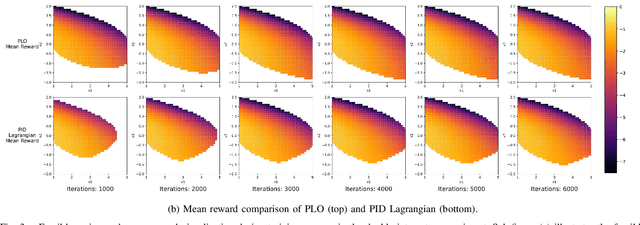
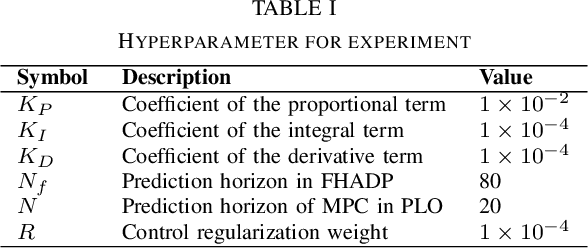
Abstract:Constrained optimization is popularly seen in reinforcement learning for addressing complex control tasks. From the perspective of dynamic system, iteratively solving a constrained optimization problem can be framed as the temporal evolution of a feedback control system. Classical constrained optimization methods, such as penalty and Lagrangian approaches, inherently use proportional and integral feedback controllers. In this paper, we propose a more generic equivalence framework to build the connection between constrained optimization and feedback control system, for the purpose of developing more effective constrained RL algorithms. Firstly, we define that each step of the system evolution determines the Lagrange multiplier by solving a multiplier feedback optimal control problem (MFOCP). In this problem, the control input is multiplier, the state is policy parameters, the dynamics is described by policy gradient descent, and the objective is to minimize constraint violations. Then, we introduce a multiplier guided policy learning (MGPL) module to perform policy parameters updating. And we prove that the resulting optimal policy, achieved through alternating MFOCP and MGPL, aligns with the solution of the primal constrained RL problem, thereby establishing our equivalence framework. Furthermore, we point out that the existing PID Lagrangian is merely one special case within our framework that utilizes a PID controller. We also accommodate the integration of other various feedback controllers, thereby facilitating the development of new algorithms. As a representative, we employ model predictive control (MPC) as the feedback controller and consequently propose a new algorithm called predictive Lagrangian optimization (PLO). Numerical experiments demonstrate its superiority over the PID Lagrangian method, achieving a larger feasible region up to 7.2% and a comparable average reward.
Domain-conditioned and Temporal-guided Diffusion Modeling for Accelerated Dynamic MRI Reconstruction
Jan 16, 2025



Abstract:Purpose: To propose a domain-conditioned and temporal-guided diffusion modeling method, termed dynamic Diffusion Modeling (dDiMo), for accelerated dynamic MRI reconstruction, enabling diffusion process to characterize spatiotemporal information for time-resolved multi-coil Cartesian and non-Cartesian data. Methods: The dDiMo framework integrates temporal information from time-resolved dimensions, allowing for the concurrent capture of intra-frame spatial features and inter-frame temporal dynamics in diffusion modeling. It employs additional spatiotemporal ($x$-$t$) and self-consistent frequency-temporal ($k$-$t$) priors to guide the diffusion process. This approach ensures precise temporal alignment and enhances the recovery of fine image details. To facilitate a smooth diffusion process, the nonlinear conjugate gradient algorithm is utilized during the reverse diffusion steps. The proposed model was tested on two types of MRI data: Cartesian-acquired multi-coil cardiac MRI and Golden-Angle-Radial-acquired multi-coil free-breathing lung MRI, across various undersampling rates. Results: dDiMo achieved high-quality reconstructions at various acceleration factors, demonstrating improved temporal alignment and structural recovery compared to other competitive reconstruction methods, both qualitatively and quantitatively. This proposed diffusion framework exhibited robust performance in handling both Cartesian and non-Cartesian acquisitions, effectively reconstructing dynamic datasets in cardiac and lung MRI under different imaging conditions. Conclusion: This study introduces a novel diffusion modeling method for dynamic MRI reconstruction.
SwiftDiffusion: Efficient Diffusion Model Serving with Add-on Modules
Jul 02, 2024



Abstract:This paper documents our characterization study and practices for serving text-to-image requests with stable diffusion models in production. We first comprehensively analyze inference request traces for commercial text-to-image applications. It commences with our observation that add-on modules, i.e., ControlNets and LoRAs, that augment the base stable diffusion models, are ubiquitous in generating images for commercial applications. Despite their efficacy, these add-on modules incur high loading overhead, prolong the serving latency, and swallow up expensive GPU resources. Driven by our characterization study, we present SwiftDiffusion, a system that efficiently generates high-quality images using stable diffusion models and add-on modules. To achieve this, SwiftDiffusion reconstructs the existing text-to-image serving workflow by identifying the opportunities for parallel computation and distributing ControlNet computations across multiple GPUs. Further, SwiftDiffusion thoroughly analyzes the dynamics of image generation and develops techniques to eliminate the overhead associated with LoRA loading and patching while preserving the image quality. Last, SwiftDiffusion proposes specialized optimizations in the backbone architecture of the stable diffusion models, which are also compatible with the efficient serving of add-on modules. Compared to state-of-the-art text-to-image serving systems, SwiftDiffusion reduces serving latency by up to 5x and improves serving throughput by up to 2x without compromising image quality.
The state-of-the-art in Cardiac MRI Reconstruction: Results of the CMRxRecon Challenge in MICCAI 2023
Apr 01, 2024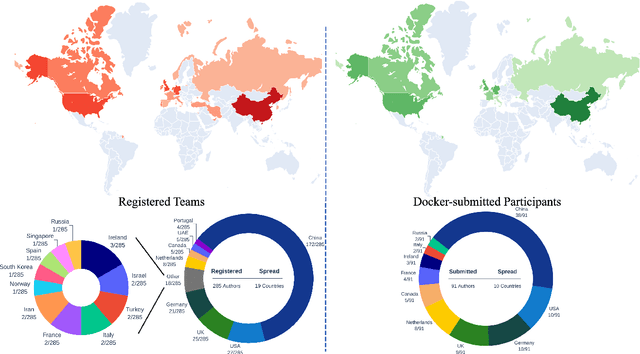
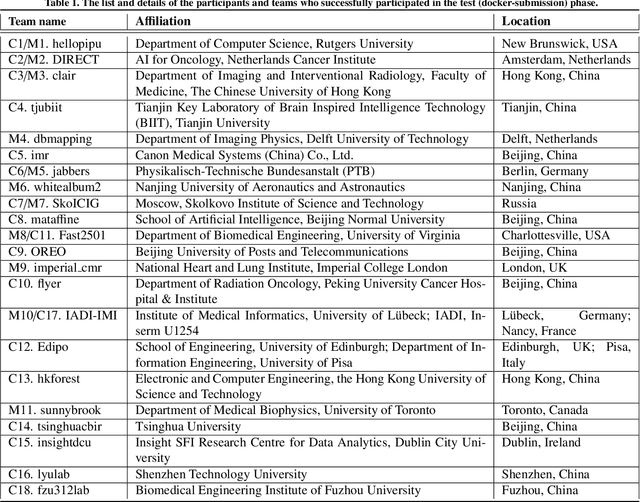
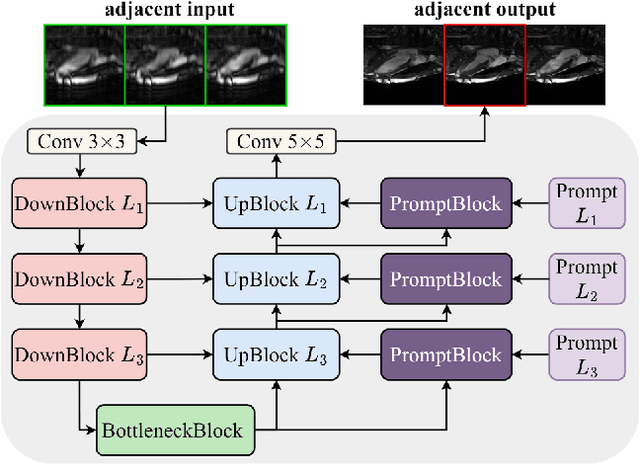
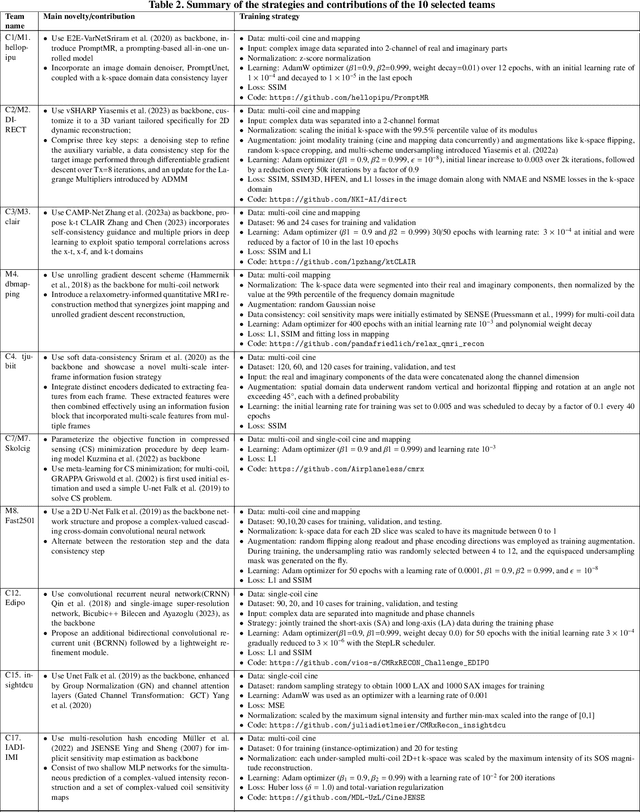
Abstract:Cardiac MRI, crucial for evaluating heart structure and function, faces limitations like slow imaging and motion artifacts. Undersampling reconstruction, especially data-driven algorithms, has emerged as a promising solution to accelerate scans and enhance imaging performance using highly under-sampled data. Nevertheless, the scarcity of publicly available cardiac k-space datasets and evaluation platform hinder the development of data-driven reconstruction algorithms. To address this issue, we organized the Cardiac MRI Reconstruction Challenge (CMRxRecon) in 2023, in collaboration with the 26th International Conference on MICCAI. CMRxRecon presented an extensive k-space dataset comprising cine and mapping raw data, accompanied by detailed annotations of cardiac anatomical structures. With overwhelming participation, the challenge attracted more than 285 teams and over 600 participants. Among them, 22 teams successfully submitted Docker containers for the testing phase, with 7 teams submitted for both cine and mapping tasks. All teams use deep learning based approaches, indicating that deep learning has predominately become a promising solution for the problem. The first-place winner of both tasks utilizes the E2E-VarNet architecture as backbones. In contrast, U-Net is still the most popular backbone for both multi-coil and single-coil reconstructions. This paper provides a comprehensive overview of the challenge design, presents a summary of the submitted results, reviews the employed methods, and offers an in-depth discussion that aims to inspire future advancements in cardiac MRI reconstruction models. The summary emphasizes the effective strategies observed in Cardiac MRI reconstruction, including backbone architecture, loss function, pre-processing techniques, physical modeling, and model complexity, thereby providing valuable insights for further developments in this field.
A Novel Loss Function-based Support Vector Machine for Binary Classification
Mar 25, 2024



Abstract:The previous support vector machine(SVM) including $0/1$ loss SVM, hinge loss SVM, ramp loss SVM, truncated pinball loss SVM, and others, overlooked the degree of penalty for the correctly classified samples within the margin. This oversight affects the generalization ability of the SVM classifier to some extent. To address this limitation, from the perspective of confidence margin, we propose a novel Slide loss function ($\ell_s$) to construct the support vector machine classifier($\ell_s$-SVM). By introducing the concept of proximal stationary point, and utilizing the property of Lipschitz continuity, we derive the first-order optimality conditions for $\ell_s$-SVM. Based on this, we define the $\ell_s$ support vectors and working set of $\ell_s$-SVM. To efficiently handle $\ell_s$-SVM, we devise a fast alternating direction method of multipliers with the working set ($\ell_s$-ADMM), and provide the convergence analysis. The numerical experiments on real world datasets confirm the robustness and effectiveness of the proposed method.
Deep Learning-based 3D Point Cloud Classification: A Systematic Survey and Outlook
Nov 05, 2023Abstract:In recent years, point cloud representation has become one of the research hotspots in the field of computer vision, and has been widely used in many fields, such as autonomous driving, virtual reality, robotics, etc. Although deep learning techniques have achieved great success in processing regular structured 2D grid image data, there are still great challenges in processing irregular, unstructured point cloud data. Point cloud classification is the basis of point cloud analysis, and many deep learning-based methods have been widely used in this task. Therefore, the purpose of this paper is to provide researchers in this field with the latest research progress and future trends. First, we introduce point cloud acquisition, characteristics, and challenges. Second, we review 3D data representations, storage formats, and commonly used datasets for point cloud classification. We then summarize deep learning-based methods for point cloud classification and complement recent research work. Next, we compare and analyze the performance of the main methods. Finally, we discuss some challenges and future directions for point cloud classification.
$k$-$t$ CLAIR: Self-Consistency Guided Multi-Prior Learning for Dynamic Parallel MR Image Reconstruction
Oct 17, 2023



Abstract:Cardiac magnetic resonance imaging (CMR) has been widely used in clinical practice for the medical diagnosis of cardiac diseases. However, the long acquisition time hinders its development in real-time applications. Here, we propose a novel self-consistency guided multi-prior learning framework named $k$-$t$ CLAIR to exploit spatiotemporal correlations from highly undersampled data for accelerated dynamic parallel MRI reconstruction. The $k$-$t$ CLAIR progressively reconstructs faithful images by leveraging multiple complementary priors learned in the $x$-$t$, $x$-$f$, and $k$-$t$ domains in an iterative fashion, as dynamic MRI exhibits high spatiotemporal redundancy. Additionally, $k$-$t$ CLAIR incorporates calibration information for prior learning, resulting in a more consistent reconstruction. Experimental results on cardiac cine and T1W/T2W images demonstrate that $k$-$t$ CLAIR achieves high-quality dynamic MR reconstruction in terms of both quantitative and qualitative performance.
 Add to Chrome
Add to Chrome Add to Firefox
Add to Firefox Add to Edge
Add to Edge